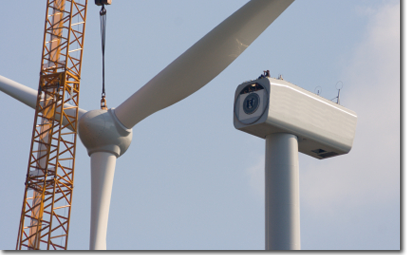Precise polymer loading into the fiber matrix ensures adequate coverage, with no waste.
Carbon fiber reinforced polymer (CFRP) is an advanced composite material that’s highly valued due to its exceptional strength, rigidity and light weight. Although carbon fiber components can be relatively expensive, the performance gains can more than offset the additional cost. For instance, much of the fuselage and wings of the new Boeing 787 Dreamliner and Airbus A350 XWB are composed of CFRP, making them lighter than a comparable aluminum design, and yielding significant fuel efficiency gains over the life of the airframe.
Military and aerospace applications are still the dominant uses of advanced composites, although numerous commercial applications are being made. The automotive and transportation industries in general have significant applications of carbon fiber composites; additionally consumer applications in bicycles, golf clubs, watercraft, archery, other sporting equipment continue to grow.
Common to all composite polymer matrix manufacturing is the introduction of a resin and a curing agent into a reinforcing fiber structure. Pre-impregnating the fiber structure with the resin/catalyst material simplifies most manufacturing processes, because the prepreg material is ready to go straight to the mold. Pre-impregnation can be done on tables or in open vessels where resin is spread onto the fibers, or in a pultrusion process where the fibers are drawn through a die that coats the fibers while doctoring off the excess material.
Once the pre-preg mats are prepared they are typically placed in a heated and pressurized mold to shape and "cure" the matrix into a finished part. A vacuum is sometimes applied to pull air and gases from the polymer/fiber structure to prevent pinholes and other voids. The resin acts to hold the fibers together and protect them, and to transfer the load to the fibers in the fabricated composite part. The curing agent, also known as hardener, acts as a catalyst and helps in curing the resin to a hard plastic. The reinforcing fiber imparts strength and other required properties to the composite.
While the finished product is simply called carbon fiber, the polymer resin plays a highly critical role in the performance of the finished product. Controlling the ratio of resin to catalyst, and the total quantity of blended polymer added to the carbon fiber structure is necessary to achieve the intended finished part characteristics. Whether the liquids are blended on the fly or in a batch, accurate measurement is essential to achieve the desired, working pot-life of the material. Blending errors, due to flow measurement errors, can ruin the $60/yd2 fabrics. Thermoset resins are prevalent in carbon fiber manufacturing, with epoxy the dominant material, although polyurethanes are sometimes used due to their faster reaction times and lower reactive heat.
Max Equipment Offers:
- Highly accurate flow measurement over a wide flow range ensures optimal resin/catalyst ratio
- Precise polymer loading into the fiber matrix ensures adequate coverage, with no waste
- Measure high viscosity and varying viscosity liquids with no loss of accuracy
- Simple and fast installation and commissioning at start-up
- Each meter is delivered factory calibrated and ready for use
If you would like a quote for a similar project, please let us know.





